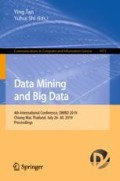Abstract
The physical mechanism of galaxies lead to their complicated appearances, which could be categorized and require thorough study. Though millions of radio components have been detected by the telescopes, the number of radio galaxies, whose morphologies are well-labeled and categorized, is very few. In this work, we try to mind the features of radio galaxies and classify them with a semi-supervised learning strategy. An autoencoder based on the VGG-16 net is constructed first and pre-trained with unlabeled large-scale dataset to extract the general features of the radio galaxies, and then fine-tuned with labeled small-scale dataset to obtain a morphology classifier. Experiments are designed and demonstrated based on the observations from the Faint Images of the Radio Sky at Twenty-Centimeters Survey (FIRST), where we focus on the classification of three typical morphology types namely Fanaroff-Riley Type I/II (FRI/II), and the bent tailed (C-shape) galaxies. Compared to transfer learning on the same VGG-16 network, which was not trained with enough astronomical images and may suffer from a data-unseen problem, our semi-supervised approach achieves better performance at both high and balanced precision and recall.
Access this chapter
Tax calculation will be finalised at checkout
Purchases are for personal use only
Notes
- 1.
FIRSTcutout: https://third.ucllnl.org/cgi-bin/firstcutout.
References
Padovani, P., et al.: Active galactic nuclei: what’s in a name? Annu. Rev. Astron. Astr. 25, 2 (2017)
Koopmans, L., et al.: The cosmic dawn and epoch of reionisation with SKA. In: Advancing Astrophysics with the Square Kilometre Array (AASKA14), vol. 1 (2015)
Wang, J., et al.: How to identify and separate bright galaxy clusters from the low-frequency radio sky. Astronphy. J. 723, 620–633 (2010)
Hancock, P.J., Murphy, T., Gaensler, B.M., Hopkins, A., Curran, J.R.: Compact continuum source finding for next generation radio surveys. Mon. Not. R. Astron. Soc. 422, 1812–1824 (2012)
Mohan, N., Rafferty, D.: PyBDSF: Python Blob Detection And Source Finder. Astrophysics Source Code Library (2015)
Chapman, E., et al.: Foreground removal using fastica: a showcase of LOFAR-EoR. Mon. Not. R. Astron. Soc. 423(3), 2518–2532 (2012)
Chapman, E., Zaroubi, S., Abdalla, F.B., Dulwich, F., Jelić, V., Mort, B.: The effect of foreground mitigation strategy on EoR window recovery. Mon. Not. R. Astron. Soc. 458, 2928–2939 (2016)
Fanaroff, B.L., Riley, J.M.: The morphology of extragalactic radio sources of high and low luminosity. Mon. Not. R. Astron. Soc. 167, 31P–36P (1974)
Rudnick, L., Owen, F.N.: Head-tail radio sources in clusters of galaxies. Astrophys. J. L. 203, L107–L111 (1976)
Proctor, D.D.: Morphological annotations for groups in the first database. Astrophys. J. Suppl. Ser. 194, 31 (2011)
Becker, R.H., White, R.L., Helfand, D.J.: The FIRST survey: faint images of the radio sky at twenty centimeters. Astrophys. J. 450, 559 (1995)
Best, P.N., Heckman, T.M.: On the fundamental dichotomy in the local radio-AGN population: accretion, evolution and host galaxy properties. Mon. Not. R. Astron. Soc. 421, 1569–1582 (2012)
Aniyan, A.K., Thorat, K.: Classifying radio galaxies with the convolutional neural network. Astrophys. J. Suppl. Ser. 230, 20 (2017)
Capetti, A., Massaro, F., Baldi, R.D.: FRICAT: a FIRST catalog of FR I radio galaxies. Astron. Astrophys. 598, A49 (2017)
Capetti, A., Massaro, F., Baldi, R.D.: FRIICAT: a FIRST catalog of FR II radio galaxies. Astron. Astrophys. 601, A81 (2017)
Krizhevsky, A., Sutskever, I., Hinton, G.E.: ImageNet classification with deep convolutional neural networks. Commun. ACM 60(6), 84–90 (2017)
Simonyan, K., Zisserman, A.: Very deep convolutional networks for large-scale image recognition. ArXiv e-prints (2014)
Goodfellow, I., Bengio, Y., Courville, A.: Deep Learning. MIT Press (2016). http://www.deeplearningbook.org
Pan, S.J., Yang, Q.: A survey on transfer learning. IEEE Trans. Knowl. Data Eng. 22(10), 1345–1359 (2010)
Rosenstein, M., Marx, Z., Kaelbling, L., Dietterich, T.: To transfer or not transfer. In: NIPS 2005 Workshop on Transfer Learning, Vancouver, Canada, vol. 1 (2005)
Deng, J., Dong, W., Socher, R., Li, L., Li, K., Li, F.F.: Imagenet: a large-scale hierarchical image database. In: IEEE Conference on Computer Vision and Pattern Recognition, CVPR 2009, pp. 248–255. IEEE, Miami (2009)
Ma, Z., Xu, H., Zhu, J., et al.: A machine learning based morphological classification of 14,251 radio AGNs selected from the best-Heckman sample. Astron. J. Suppl. S. 240(34), 1–21 (2019)
Hogg, D.W.: Confusion Errors in Astrometry and Counterpart Association. Astron. J. 121, 1207–1213 (2001)
Kendall, A., Gal, Y.: What uncertainties do we need in Bayesian deep learning for computer vision? ArXiv e-print arXiv:1703.04977 (2017)
Glorot, X., Bordes, A., Bengio, Y.: Deep sparse rectifier neural networks. J. Mach. Learn. Res. 15(106), 275 (2011)
Kingma, D., Ba, J.: Adam: a method for stochastic optimization. ArXiv e-print arXiv:1412.6980 (2014)
Acknowledgments
This work was supported by the National Natural Science Foundation of China (grant No. 11433002) and the National Key Research and Discovery Plan Nos. 2017YFF0210903 and 2018YFA0404601.
Author information
Authors and Affiliations
Corresponding author
Editor information
Editors and Affiliations
Rights and permissions
Copyright information
© 2019 Springer Nature Singapore Pte Ltd.
About this paper
Cite this paper
Ma, Z., Zhu, J., Zhu, Y., Xu, H. (2019). Classification of Radio Galaxy Images with Semi-supervised Learning. In: Tan, Y., Shi, Y. (eds) Data Mining and Big Data. DMBD 2019. Communications in Computer and Information Science, vol 1071. Springer, Singapore. https://doi.org/10.1007/978-981-32-9563-6_20
Download citation
DOI: https://doi.org/10.1007/978-981-32-9563-6_20
Published:
Publisher Name: Springer, Singapore
Print ISBN: 978-981-32-9562-9
Online ISBN: 978-981-32-9563-6
eBook Packages: Computer ScienceComputer Science (R0)

